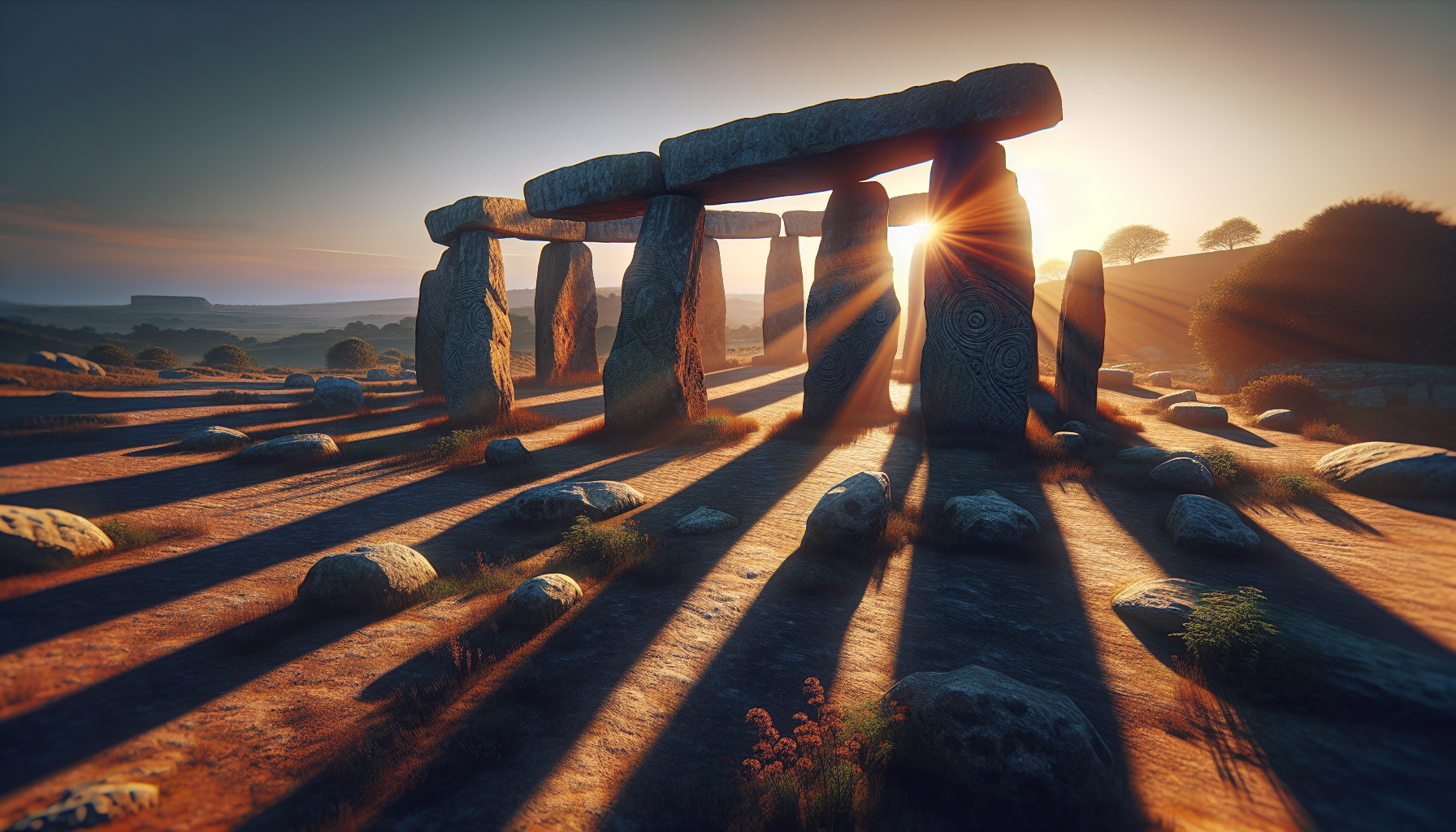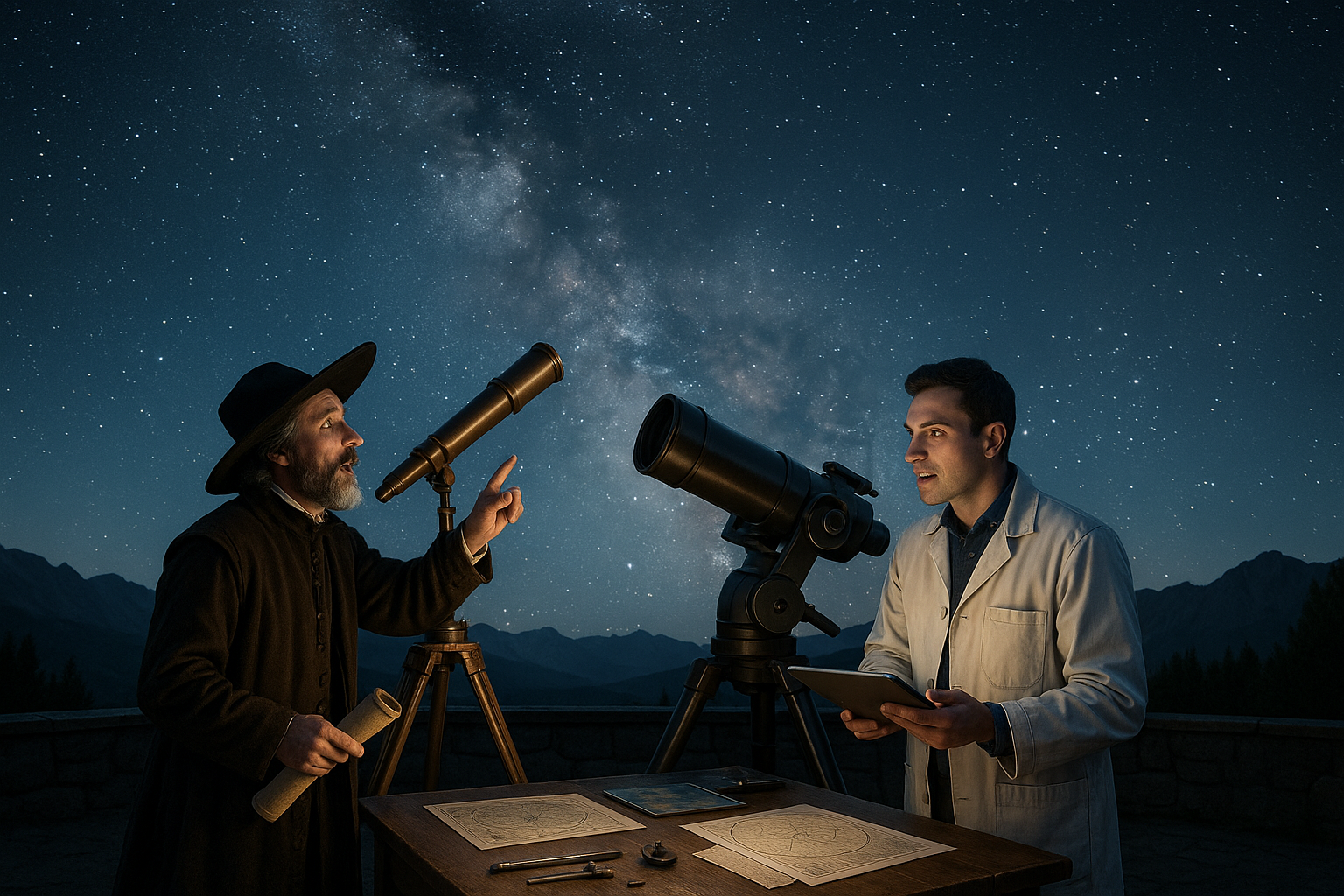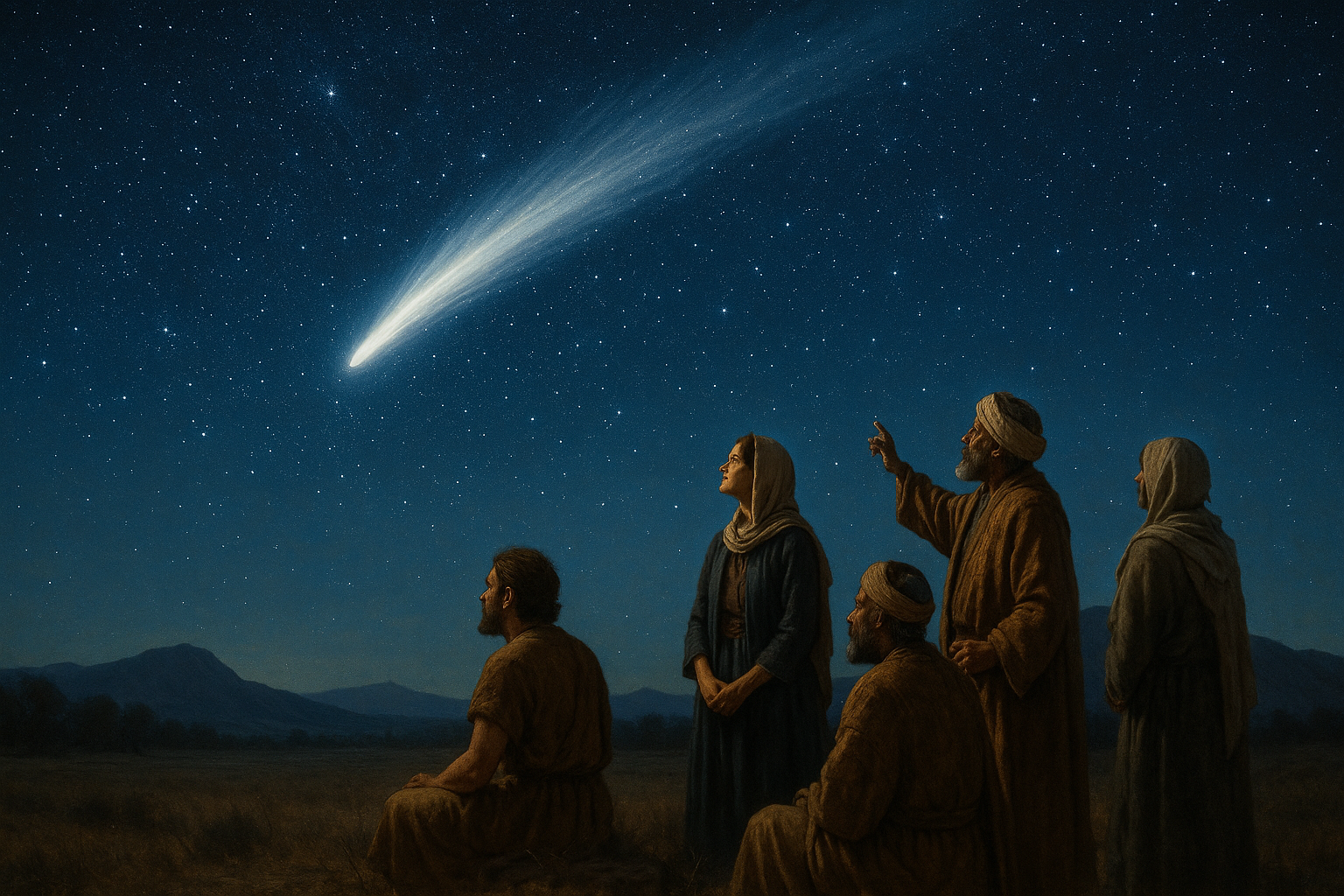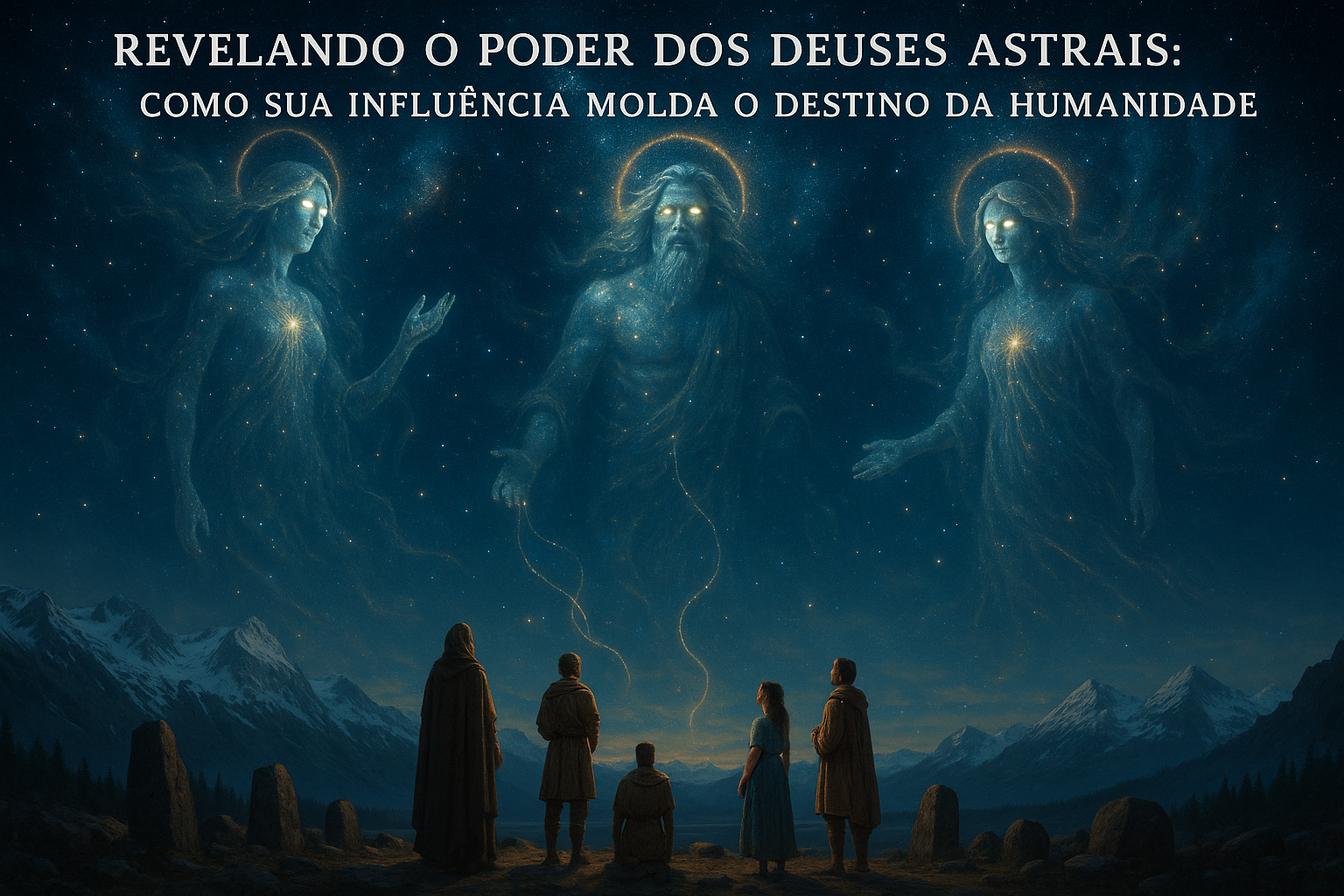In the quiet stillness of ancient landscapes, where time seems to have paused and the whispers of history linger in the air, there lies an enigmatic art form that has fascinated humanity for centuries: the art of shadow-casting through stone structures. This ancient practice, often overlooked in the annals of history, offers us profound insights into the lives and minds of those who came before us. It is a testament to human ingenuity and our eternal quest to understand the cosmos and our place within it. As the sun rises and sets, casting ever-changing shadows, these stone structures come alive, telling stories of ancient civilizations, their beliefs, and their mastery over the natural world. 🌄
At the heart of this exploration lies the intriguing question: how did ancient civilizations harness the power of light and shadow to create monumental works that still capture our imagination today? From the towering pyramids of Egypt to the mysterious Stonehenge in England, and even to the lesser-known structures scattered across the globe, each edifice serves as a canvas where sunlight paints a picture of a bygone era. In this journey, we will delve into the techniques employed by these early architects, examining how they meticulously aligned their creations with celestial bodies, transforming simple stone into dynamic calendars, ceremonial sites, and tools for agricultural planning. We will uncover the scientific and mathematical prowess that underpins these structures, revealing how these ancient builders blended art with precision to craft enduring legacies.
As we unravel the mysteries of shadow-casting, we will also explore the cultural and spiritual significance these structures held for their creators. What did these shadows signify to the people who observed them thousands of years ago? How did they influence religious rituals, societal structures, and daily life? By peeling back the layers of time, we will connect with the minds of those who stood in awe of these magnificent creations, gaining a deeper appreciation for the creativity and vision that propelled human progress. Join us on this illuminating journey as we shine a light on the past, revealing the intricate dance between stone and sun that has shaped human history and continues to inspire awe in the modern world. 🌞
The Significance of Shadow-casting in Ancient Architecture
Shadow-casting in ancient stone structures has always been a fascinating subject for archaeologists and historians. These structures, often constructed with impeccable precision, reflect the advanced understanding of astronomy and geometry possessed by ancient civilizations. By studying these shadows, researchers can unravel various aspects of historical cultures, from their religious beliefs to agricultural practices. Shadow-casting was not merely an artistic expression but a functional tool that played a significant role in daily life. The intricate dance of light and shadow enabled ancient societies to track time, mark seasonal changes, and even celebrate religious festivals.
The ancient Egyptians, for example, constructed their pyramids with incredible alignment to celestial bodies. The Great Pyramid of Giza is not only a marvel of engineering but also an astronomical observatory of sorts. Its four sides are oriented almost precisely to the cardinal points, and during the equinoxes, the sun casts no shadow on its northern face, an effect meticulously calculated by its builders. This phenomenon was likely used for calendrical purposes, helping the Egyptians maintain their agricultural calendar, which was essential for a society reliant on the Nile’s flood cycles.
Similarly, the Mayans designed their cities and temples to align with astronomical events. The Temple of Kukulkan at Chichen Itza is renowned for its shadow-casting effects during the equinoxes. As the sun sets, the play of light and shadow creates the illusion of a serpent slithering down the temple’s steps. This remarkable phenomenon underscores the Mayans’ sophisticated understanding of astronomy and their ability to incorporate it into their architectural designs. Such alignments were not coincidental but were planned to reflect the Mayans’ cosmological beliefs and their reverence for celestial deities.
Shadow-casting Techniques and Their Purposes
Ancient architects employed various techniques to manipulate shadows, each serving a unique purpose. The precision with which these structures were built reflects a deep understanding of the movement of the sun and its interaction with the earth. The careful placement of stones and the intentional orientation of buildings were pivotal in achieving the desired shadow effects. These techniques were not only practical but also imbued with symbolic meanings, often reflecting the society’s religious or cultural narratives.
One of the primary techniques used was the alignment of structures with specific celestial events. For instance, many ancient temples and monuments are oriented to mark the solstices and equinoxes. This alignment allowed ancient societies to create calendars, which were crucial for agricultural planning and religious ceremonies. By observing the shadows cast by these structures, they could determine the time of year and plan accordingly.
In addition to alignment, ancient builders also employed the use of specific shapes and angles to cast shadows in meaningful ways. The use of triangular stones, for example, could create dramatic shadow effects that were significant for ritual purposes. The interplay of light and shadow was often used to symbolize the duality of life and death, light and darkness, which were common themes in many ancient cultures.
Comparative Analysis of Shadow-casting Structures
| Civilization | Structure | Shadow-casting Technique | Purpose |
|---|---|---|---|
| Egyptian | Great Pyramid of Giza | Cardinal Alignment | Calendrical and Religious |
| Mayan | Temple of Kukulkan | Equinox Alignment | Religious Symbolism |
| Stonehenge | Stone Circle | Solstice Alignment | Astronomical Observations |
Each of these structures highlights a unique approach to shadow-casting, demonstrating the varied applications of this technique. The Egyptians focused on aligning their pyramids for calendrical purposes, while the Mayans created intricate shadow effects to symbolize religious beliefs. Stonehenge, on the other hand, served as an astronomical observatory, marking significant solar events and possibly serving as a ceremonial site. Such diversity in applications underscores the universal importance of shadow-casting in ancient architecture.
Modern Interpretations and Research
Modern research into ancient shadow-casting techniques has been greatly enhanced by technological advancements. Archaeologists and historians now employ 3D modeling and computer simulations to study and recreate the shadow effects of ancient structures. These technologies allow researchers to analyze the alignment and positioning of stones with unprecedented accuracy, providing new insights into the architectural prowess of ancient civilizations. Moreover, modern interpretations of shadow-casting often draw parallels between historical and contemporary architecture, highlighting how ancient techniques continue to inspire and influence modern design.
The study of shadow-casting is not limited to historical analysis. It also plays a role in contemporary architectural design, where principles from the past are adapted to create environmentally sustainable buildings. The strategic use of shadow in modern architecture can reduce energy consumption by optimizing natural light and heat distribution. This approach, known as passive solar design, demonstrates how ancient wisdom is being repurposed to address modern challenges such as climate change and energy efficiency.
Additionally, educational initiatives and interactive exhibits in museums around the world have brought shadow-casting techniques to a broader audience. By engaging the public through these platforms, historians and archaeologists hope to foster a deeper appreciation for ancient architectural marvels and the cultures that created them. Through lectures, workshops, and virtual reality experiences, audiences can explore the fascinating interplay of light and shadow that characterized ancient architecture.
Video Exploration of Shadow-casting
For a visual exploration of shadow-casting techniques and their significance, check out the informative video below:
“Ancient Architecture and Shadow Play” – National Geographic
Assista ao vídeo acima para uma análise detalhada de como antigas civilizações usaram o casting de sombras em suas estruturas de pedra. É uma maneira fantástica de visualizar o impacto desses fenômenos no passado e como eles moldaram a nossa compreensão do mundo antigo.

Conclusion
Unveiling the ancient art of shadow-casting through stone structures is not merely an exploration of the past; it is a profound journey into the very fabric of human civilization. This fascinating field of study unravels the sophisticated understanding and ingenuity of our ancestors, who harnessed natural elements like sunlight to tell time, mark seasons, and even align with celestial bodies. By examining these stone structures, we gain invaluable insights into the cultural, religious, and scientific advancements of ancient societies.
Throughout this article, we delved into various aspects of this ancient art. We explored the significance of shadow-casting in historical contexts, illustrating how it served as an essential tool for ancient civilizations in agricultural planning, religious ceremonies, and social organization. We also examined the engineering prowess required to construct these structures with such precision, showcasing the technological capabilities of our forebears.
One of the key points highlighted is the diversity of shadow-casting structures across different cultures and geographies. From the monumental Stonehenge in England to the awe-inspiring pyramids of Egypt, each structure reflects a unique blend of local traditions and universal astronomical principles. This diversity not only underscores the widespread appeal and application of shadow-casting but also highlights the shared human desire to understand and connect with the cosmos.
We also discussed the methodologies used by modern researchers to study these ancient structures. Advances in technology, such as 3D modeling and satellite imagery, have revolutionized our ability to analyze and interpret these sites, allowing for more accurate reconstructions and deeper insights into their original purposes and functions.
Furthermore, we emphasized the importance of preserving these ancient sites. As cultural heritage landmarks, they are irreplaceable treasures that offer us a tangible connection to our past. Preservation efforts not only protect these sites from natural and human-induced degradation but also ensure that future generations can continue to learn from and be inspired by them.
The exploration of shadow-casting is not just an academic pursuit; it is a call to appreciate the profound wisdom of our ancestors and recognize the continuous thread of innovation and curiosity that defines humanity. By understanding how ancient people used these structures to interpret their world, we gain a greater appreciation for the rich tapestry of human history and our place within it.
In conclusion, the ancient art of shadow-casting is a testament to human ingenuity and the timeless quest for knowledge. It reminds us that while technologies and societies evolve, the fundamental human desire to explore, understand, and connect with the universe remains unchanged. As you reflect on the insights gained from this exploration, consider how you might apply these lessons to your own life or field of study. How can the ingenuity and creativity of the past inspire innovative solutions to modern challenges?
We encourage you to share your thoughts and insights on this fascinating topic. Engage with others who are equally passionate about history and archaeology, and contribute to the ongoing conversation about our shared human heritage. Sharing this knowledge can inspire others to appreciate and preserve these invaluable relics of the past. 🌟
For further exploration, consider visiting reputable sources such as the British Museum or the Smithsonian Institution, which offer extensive resources and research on ancient civilizations and their architectural marvels. These platforms provide a wealth of information and are excellent starting points for anyone interested in delving deeper into the subject.
Thank you for joining us on this enlightening journey through time. May the shadows of the past continue to illuminate our path forward, guiding us with the wisdom of ages long gone.
Toni Santos is a visual storyteller and cosmic interpreter whose work illuminates the ancient skywatchers and their prehistoric astronomy—the profound ways early humans observed and revered the heavens before written history. Through a visionary lens, Toni explores how the stars, planets, and celestial cycles shaped myth, ritual, and survival in cultures lost to time.
Rooted in a fascination with archaic observatories, stone alignments, and celestial symbolism, Toni’s creative journey reveals the deep human impulse to understand and harmonize with the cosmos. From lunar phases guiding planting seasons to the sacred paths of the Milky Way, each of his works embodies the awe and knowledge encoded in the night sky.
Combining artistic craftsmanship with archaeological insight, Toni’s pieces evoke the mystery and precision of prehistoric astronomers. His work does more than depict—it channels the timeless dance between earth and sky, bridging ancient wisdom with contemporary wonder.
As the visionary behind Vizovex, Toni shares curated visuals, essays, and symbolic studies that invite others to reconnect with the cosmic heritage written in stone and starlight. His creations are a call to look upward, to listen to the silent stories told by the stars, and to honor the first astronomers who mapped the heavens with reverence and ingenuity.
His work is a tribute to:
The celestial wisdom of prehistoric peoples
The sacred geometry of ancient observatories
The enduring bond between human culture and the cosmos
Whether you’re a stargazer, a scholar of ancient mysteries, or someone captivated by the universe’s earliest storytellers, Toni welcomes you to journey through a space where the sky is both map and myth—one constellation, one ritual, one revelation at a time.




